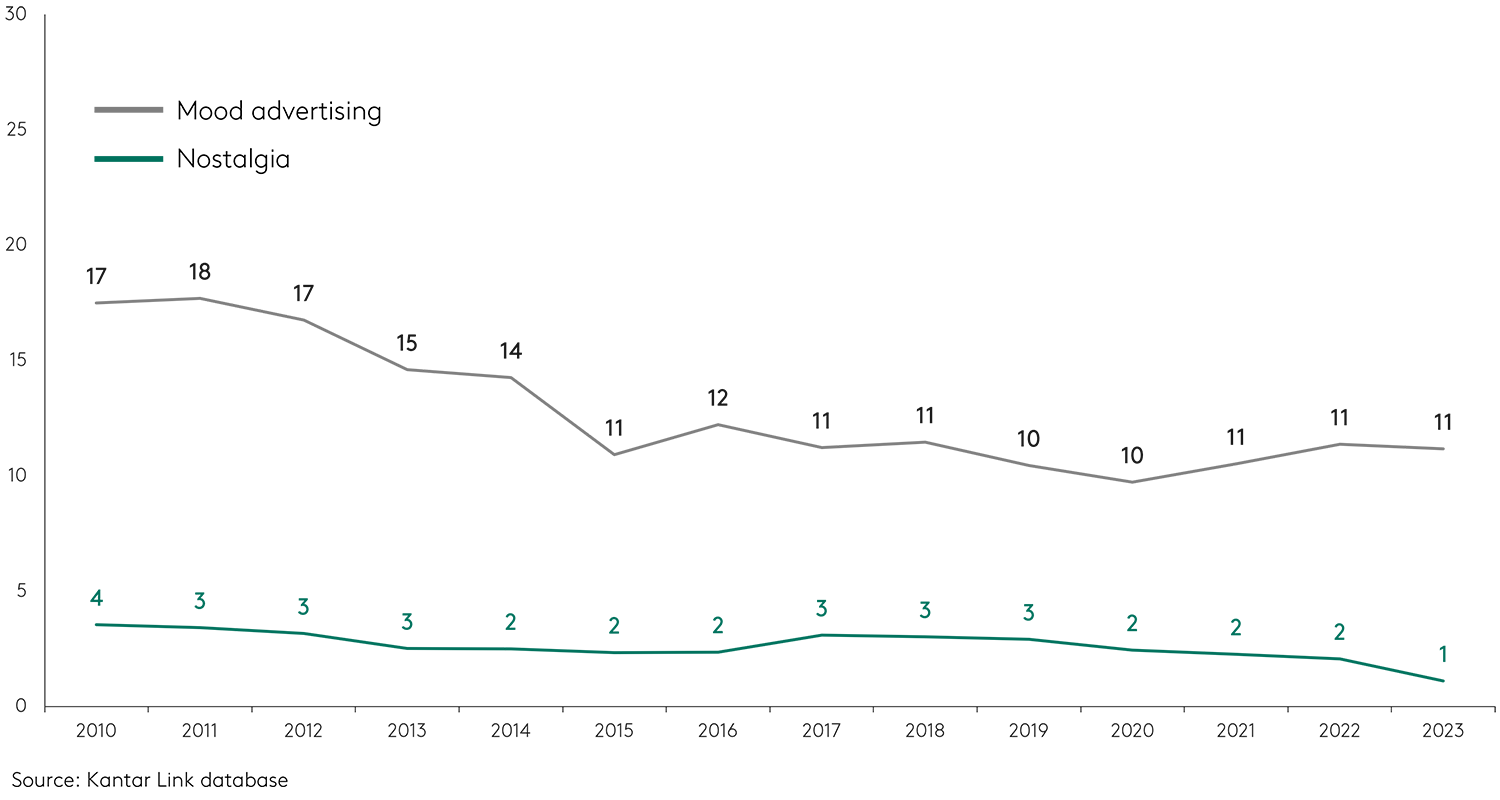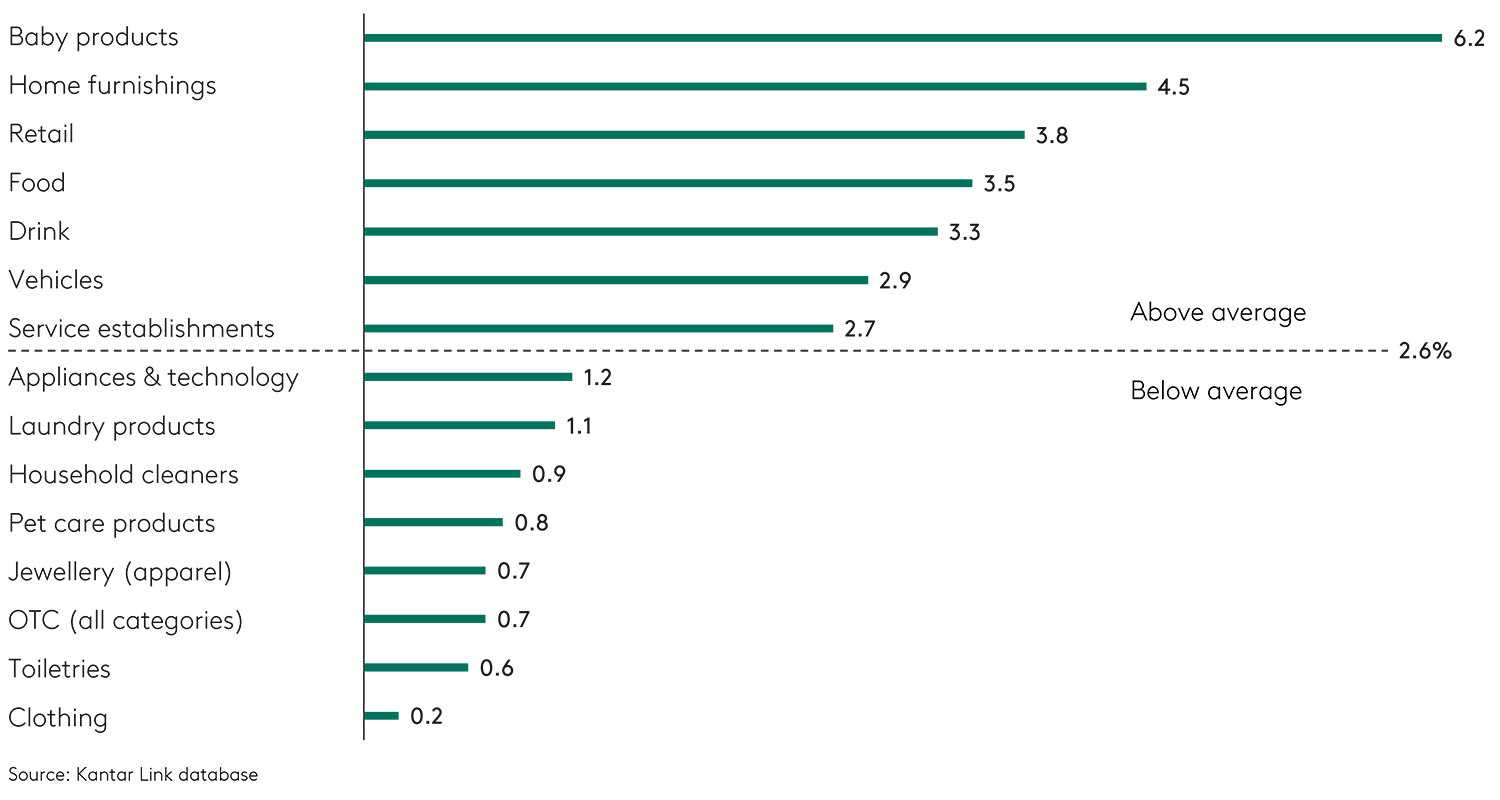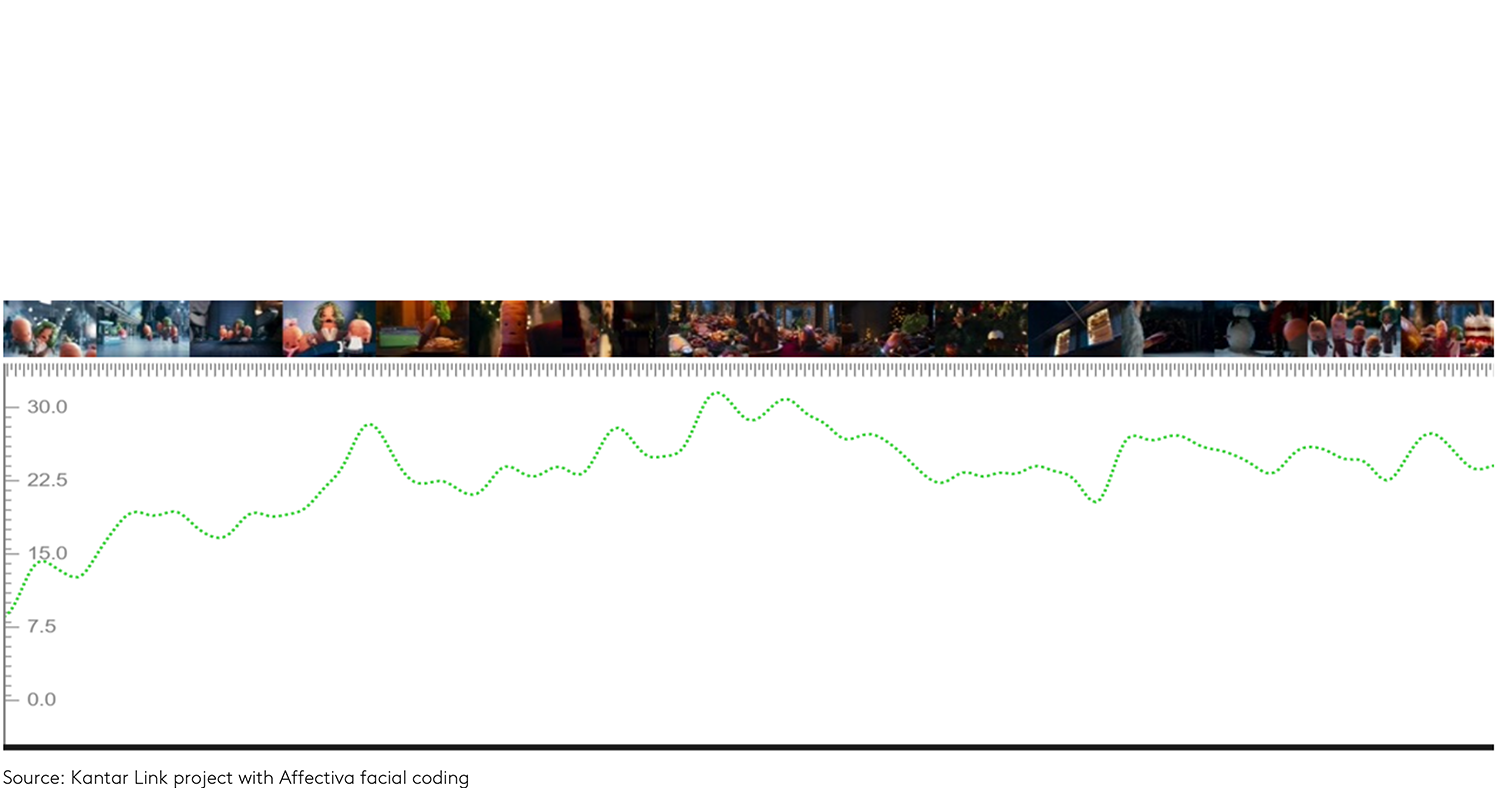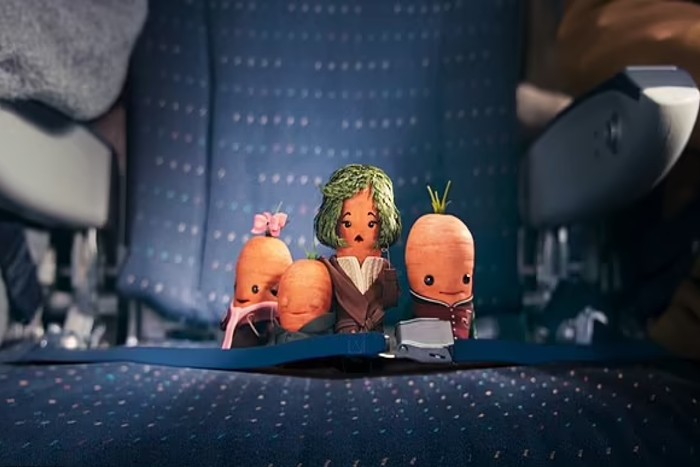Agile Market ResearchAdvertising Media & CommunicationBrandMedia
The emotions that come with nostalgia can be as extreme as they are diverse. Looking back to the rose-tinted past can bring tears of joy or tears of sadness, and sometimes a combination of the two. Nostalgia is a powerfully emotive creative tool and was one of the key trends we saw across many of this year’s Kantar Creative Effectiveness Awards winners.
Nostalgia is a sense of sentimentality for the past, which can be triggered by places, objects or anything with personal memories and associations from a previous time. One classic example in the UK is the original Hovis ad, taking us back to the ‘good’ old days. Our imaginations encourage us to believe that the past existed in a purer form; like escapism, it is a journey of the mind. This deep level of transportation, also known as a ‘Proustian moment’ – an involuntary sensory-induced, vivid and emotional reliving of events from the past - can be triggered by any sense, without any thought processing. Escapism also a theme we saw in this year’s winning Creative Effectiveness Awards ads, differs from nostalgia in that it is more of a ‘conscious’ mental diversion used to avoid boring or unpleasant aspects of daily life, either via our imagination or through entertainment.
Nostalgia in advertising
Through nostalgia, you can connect on a more direct, deeper and immediate level, and we know how important making that emotional connection with your consumers via your advertising is. When used well it can be a powerful tool. Despite this, Kantar’s Link ad testing database of over 250,000 ads shows that, on average, less than 3% contain nostalgic elements.
Nostalgia is under used in advertising
 Chart showing the use of nostalgia in advertising; Source: Kantar
Chart showing the use of nostalgia in advertising; Source: KantarAcross categories, we see nostalgia used most often for baby products, where sentimentality is fitting. However, we’ve also seen great examples in many other categories.
Use of nostalgia by category
 Chart showing the use of nostalgia by category; Source: Kantar
Chart showing the use of nostalgia by category; Source: KantarGetting nostalgia right
As with any element of advertising, ensuring it sits comfortably with your brand and its message is at the heart of getting it right. Our Link ad testing database shows that ads with nostalgic elements show a +15 point increase in enjoyability, with a +9 point increase in emotional connection. Smiles and music engagement also both see a +15 point increase between ads using nostalgia versus those without it. Clear proof of a powerful force in deep overall emotional connection.
Nostalgia can also be used to achieve a variety of objectives. This Tennent’s Lager ad uses nostalgia perfectly, borrowing the main plot beats and visual style of the well-known Christmas movie ‘It’s a Wonderful Life’ to induce not only nostalgia, but the bittersweet feelings of the movie itself. It does this with a touch of humour but has branding at its heart.
Nostalgia can also be used to convey a brand’s message. Our winning Creative Effectiveness Awards TV ad this year did exactly that. KFC Héritage, is a great example of relatable nostalgia that is strongly connected to the brand. The ad takes us back in time to re-enforce the brand’s long heritage while at the same time showcasing how this brand is still relevant and has very much moved with the times and into the future, remaining as relevant today as it ever was. The ad shows how nostalgia can bring a brand’s story to life at the same time logging it into people’s memories. Our Link ad testing database shows a +14 point overall increase in ad distinctiveness for ads using nostalgia versus those without.
What about digital ads?
Our database shows that nostalgic ads have a +13 point higher likelihood of going viral compared with ads without nostalgia. With only 1% of all digital ads using nostalgia, in such an easily shareable environment, could they be missing a trick? Again, some of our winning digital Creative Effectiveness Awards ads showed how this can be done.
Viennetta’s TikTok ad encapsulates both escapism and a touch of nostalgia. It is set during the nostalgic cherry blossom season in Japan, with slightly other-worldly pastel pinks reflecting the colour and lightness of the product and editing techniques creating an ethereal feeling of escapism.
Viennetta Golden Stick
Another great example of nostalgia contributing to an ads ability to go viral is Aldi’s Christmas ad - Kevin the Carrot home alone. The nostalgic elements resulted in high levels of emotional connection as seen via our facial coding tool which picks up overall changes in people’s facial expressions while the ad is being viewed. This ad showed how using nostalgia appropriately and in keeping with the brand and its message resulted in an ad that people wanted to share, it brought the brand’s story to life and helped to embed it deeper in people’s memories.
Aldi's, Kevin the Carrot home alone
 Chart showing engagement with Aldi’s Kevin the carrot ad; Source: Kantar
Chart showing engagement with Aldi’s Kevin the carrot ad; Source: KantarWho does nostalgia speak to?
Like everything, nostalgia is ever-evolving. It’s hard to think of something that may feel like it was relevant only yesterday has now moved into the realm of nostalgia, but things move quickly. Even young children can experience nostalgia, so don’t be too quick to dismiss its possibilities. Nostalgia is trending with Gen Z, in their attempt to escape from an overstimulated world. So, whether it’s chopper bikes and space hoppers for the over 50s, or Tamagotchi and Game Boy for millennials, make sure your nostalgia is relatable and targeted at the audience you want to speak to.
While nostalgia tends to make us think of times gone by, it is not only looking back that can transport your audience. In this Audi ad, a runner up in this year’s Creative Effectiveness Awards, we see a mix of nostalgia and escapism with references to Scrooges visit to the future which is cleverly used to amplify the brand’s image as future thinking. However, the ‘new’ product here is still one of fiction, and flying to the future works well to convey this message, caution is needed when a product has real news to convey. Our Link ad testing database shows a -13 point decrease in ‘tells me something new’ when nostalgia is used, which is why ad testing may be even more important if your ad contains nostalgic elements and you have news to impart.
Unlike nostalgia, escapism is more actively sought out and may be a better route when nostalgia doesn’t seem appropriate. Whether past or future, it has become more frequent in a world emerging from a pandemic and can come in many forms. Gaming has been around for a long time now and different generations can relate firmly to the other-worldly experience that gaming can bring. Ever tried interrupting a teenager in the middle of an immersive gaming experience? There is no deeper loss of reality and time, no stronger disconnect from the real world and it is this deep connection that can move your brand from simply being seen to being truly embedded in memory.
What’s next?
Brands are already using new technology to bring the escapism of this deeper immersive experience to their advertising. The VR styled quality of this experiential ad from Disneyland Paris - The Infinite Parade takes us on another type of journey, one where we not only see and hear the brand but also feel something of the experience the brand is offering us.
The idea of smells being pumped through a screen to enhance visual stimulus may seem a thing of science fiction, but almost unsurprisingly, it is now a viable technology. Its initial use has been focussed on therapy and training with nose pieces adapted to fit VR headsets, but it is already coming to the cinema experience. CINÉPOLIS talked of its use and how cinema is evolving in this Kantar Future Proof podcast. With the immediate and deep connection that a smell can create, in the same way, nostalgia can emotionally transport us visually. Could smell become another part of the future of advertising that takes us on a journey? It seems likely, and now with the recent launch of Apple’s Vision Pro, even the sense of touch may be brought into the advertising world of the future. However, most advertising is still currently, largely viewed visually. Even audio is having to find clever ways to get around the ‘sound-off’ viewing that is commonplace today, but perhaps it is time to start addressing more of our senses to take us on those emotional brand journeys.
The fast-moving inventiveness of technology, with a generative AI leap looking to propel us further and faster into the future, means that new products or services are likely to rely on new technology to communicate their messages. Some products and services may need to use new environments simply to be understood. This may mean brands taking viewers into fantasy worlds will be better able to communicate their messages. With metaverse experiences moving outside the gaming world and into everyday life, we’ve already seen advertising set up in these new universes. This blending of the physical and digital will lead to hybrid experiences, giving brands new ways to personalise and connect like never before. Changes in behaviour and consumption will lead to brand re-invention to meet consumer needs.
So, while we wait for the science fiction evolution of jaunting to instantaneously teleport us to other multiverses, or fully equipped smell-o-vision to align with our visual experiences, why not try the next best thing in emotional connection? Using relevant and fitting nostalgia in your advertising could be the easiest way to take your viewers on a journey with your brand, with its destination at the core of emotional connection.
Find out more about the characteristics of great ads in Kantar Creative Effectiveness Awards.
Source: kantar.com

